| Compact SUV; Built in Japan |
|
|
| Good condition price range: $2,800 – $6,000* |
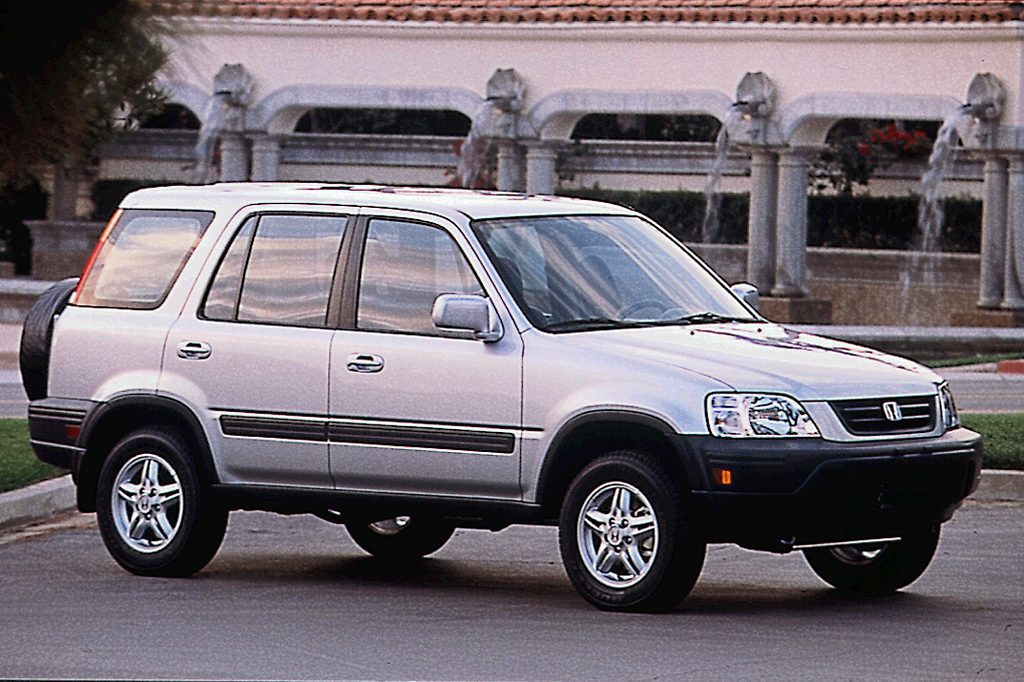
1998 Honda CR-V
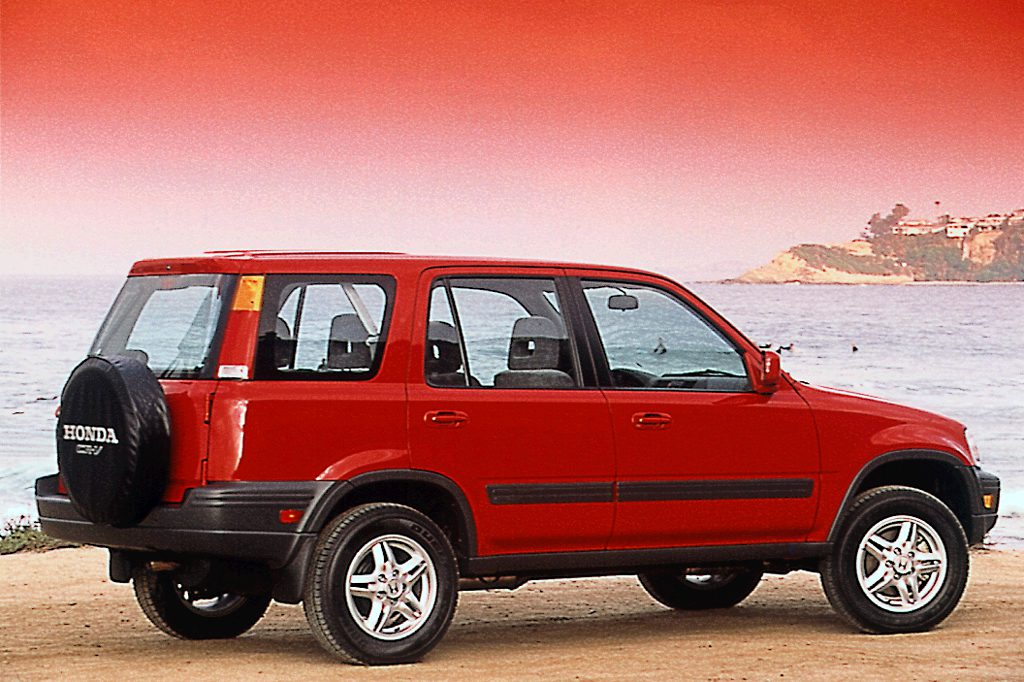
1998 Honda CR-V
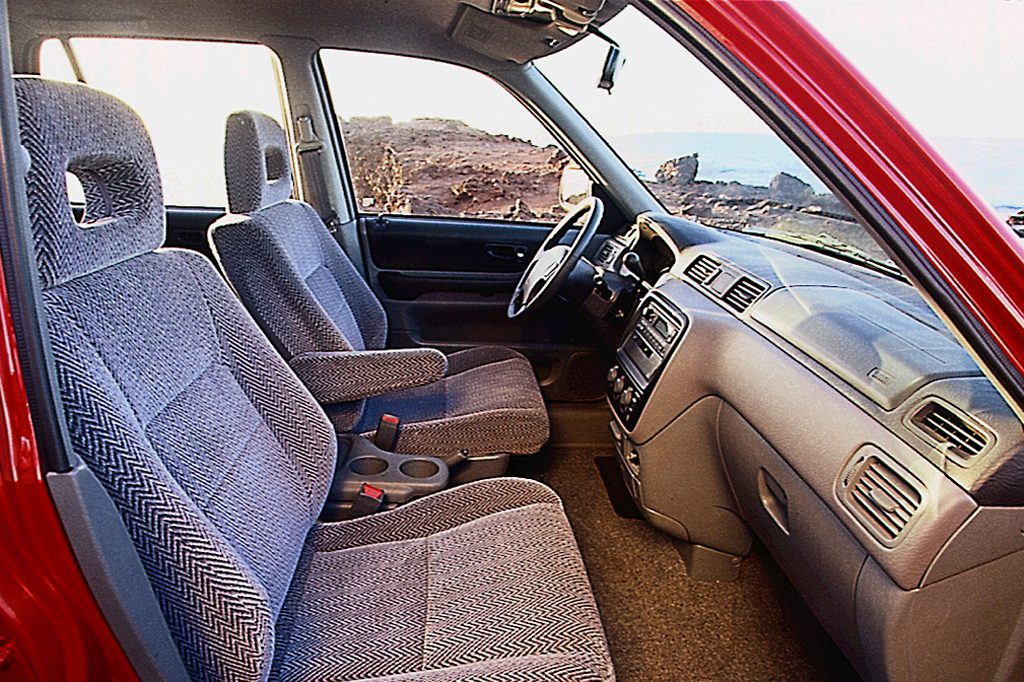
1997 Honda CR-V interior
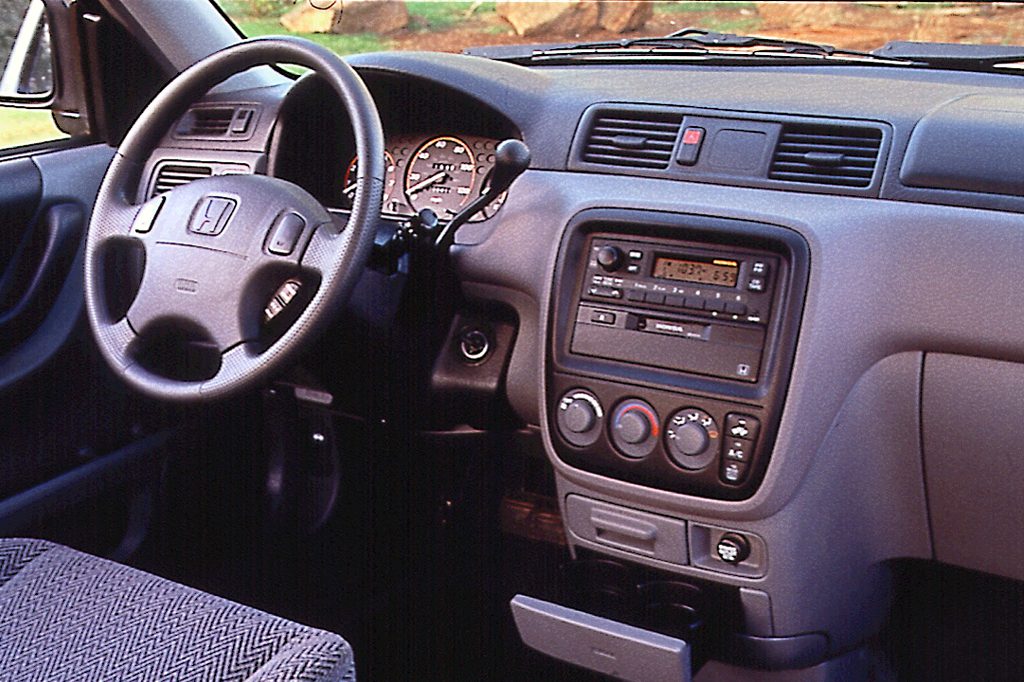
1997 Honda CR-V interior
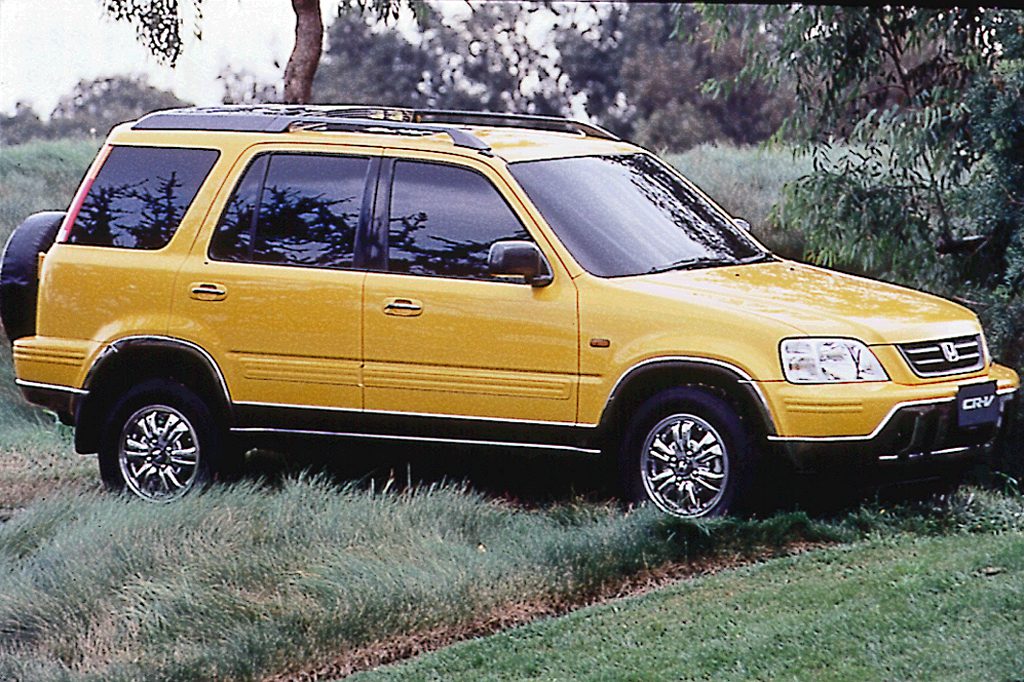
1997 Honda CR-V
| Pros: |
|
| Cons: |
|
Except for a lack of power, the CR-V almost approaches perfection. As it stands, this is a handy and well-built compact wagon with carlike manners and a 4WD system that never needs to be thought about. Even though it can’t match the space or brawn of bigger SUVs, Honda’s CR-V is clearly the nicest of the “baby-size” 4x4s.
Overview
Whereas most SUVs use truck-type body-on-frame construction with a solid rear axle, the CR-V employed carlike unibody construction and a 4-wheel independent suspension. At 103.1 inches, the CR-V wheelbase was 8.2 inches longer than that of the similar 4-door Toyota RAV4, but 8.4 inches shorter than the span of a 4-door Ford Explorer. Overall length, at 176.4 inches, was 14.4 inches longer than the RAV4 but 12.1 inches shorter than the Explorer. A side-opening tailgate and externally mounted spare tire were installed. Beneath the hood was a dual-overhead-cam 2.0-liter 4-cylinder engine, rated at 126 horsepower and driving a 4-speed automatic transmission. Honda called its standard 4-wheel-drive system “Real-Time 4WD.” Most engine power normally went to the front wheels, but a portion could be distributed to the back wheels when sensors indicated that the front tires were losing traction. No low-range gearing was installed. Seating for five and dual airbags were standard. Mounting the gear selector on the steering column instead of the floor permitted a narrow access path between the front seats.
Yearly Updates
| 1998 CR-V Midyear brought a front-wheel-drive model to join the 4WD wagon, with a standard 5-speed manual transmission and optional automatic. |
| 1999 CR-V The CR-V engine gained 20 horsepower this year. New lighted power window switches were installed, as were rear-door cupholders. An overdrive on-off switch was added to the automatic transmission’s column-mounted selector lever. |
| 2000 CR-V Except for one new paint color, nothing was new for 2000. |
| 2001 CR-V Rear child-seat tethers were the only notable change for 2001. A new model was waiting in the wings. |
